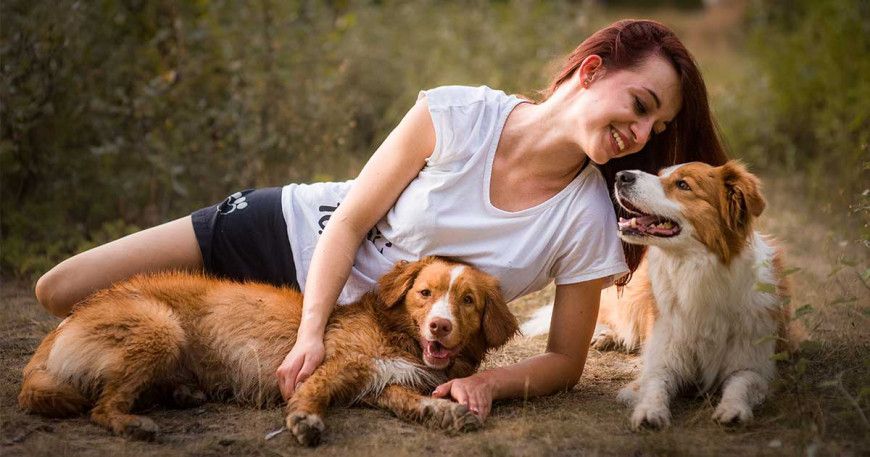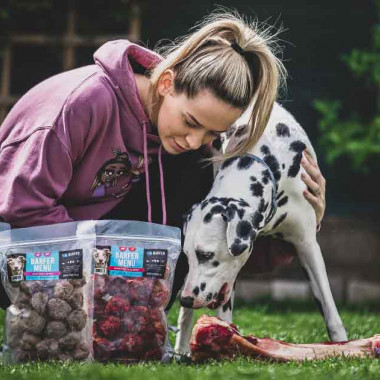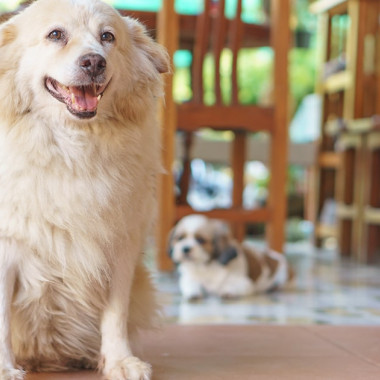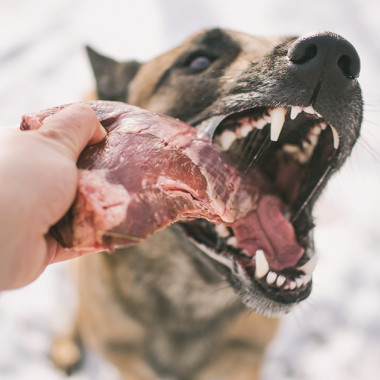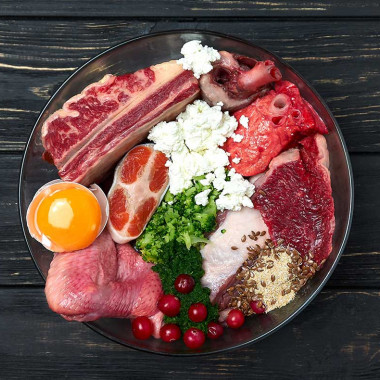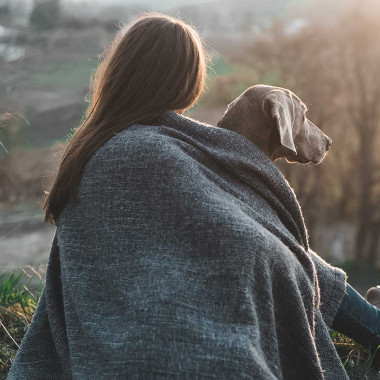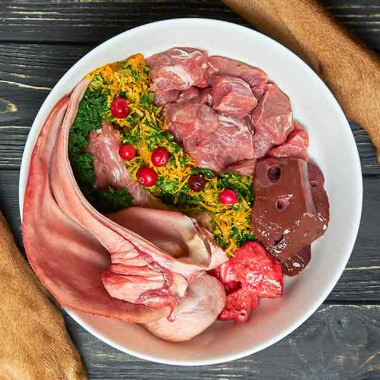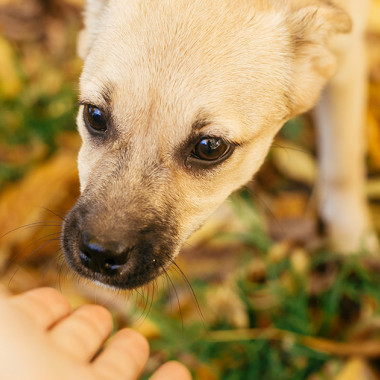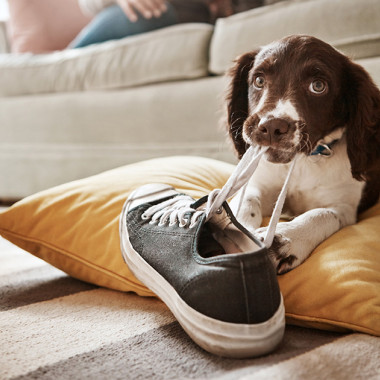Monika Krajčírová (trainer, canistherapist):
1. Hi Monika. Most of our followers and readers probably know you, but for those who don’t, could you introduce yourself?
Hello, my name is Monika. I train dogs, do canistherapy in various facilities, and also provide massages for people.
2. Rosi and Joy – we can also see them on your profile and in your training or therapy sessions. They are what brought us together. Can you tell us more about them?
Rosi is a 9-year-old Border Collie with whom I did professional dog dancing, but now she’s enjoying her retirement from dog dancing :) Thanks to her, I also got into canistherapy and various other activities. She loves stealing my slippers and running away with them. Joy is a 2-year-old Canadian Retriever – very active, with a huge desire to work and explore the world (and female dogs).
3. How long have you been feeding BARF?
Since Rosi was 12 months old, so since 2013. I switched to it for several reasons, but the main ones were: Rosi constantly had internal parasites – she lacked energy – her coat was rough and dull, and there was too much waste from kibble. I was eagerly waiting for her to turn 12 months so we could start BARF. Since I didn’t have any practical experience with BARF but only theoretical knowledge, I wanted to wait until she was a year old before starting. Lastly, I calculated that quality kibble, which I would be satisfied with, was much more expensive than BARF. So, there was nothing left to think about, and one day I gave her meat. She ate it eagerly, and within a very short time (about 5 days), I saw the differences. She had much more energy and much less waste. Later, she developed a beautiful soft coat, which convinced me that BARF was the right choice.
4. We often encounter the opinion that BARF is not suitable for dogs that train for food rewards. What’s your take on rewarding dogs on BARF? Do you find it harder, easier, or the same as with kibble-fed dogs?
I haven’t come across the idea that this is related specifically to BARF. Usually, it was more a problem of motivation or improper communication between the owner and the dog, which manifested in the dog not wanting to take treats during training. If a dog doesn’t like a certain treat, you need to try and change it – switch to really high-quality dried meat, for example, and if necessary, train with raw meat or homemade treats. I stick to the rule that it’s the dog who decides what the reward is. So, I look for something that he really likes, regardless of whether he’s on BARF or kibble.
5. If you were to name a few favorite products (or rather Rosi’s and Joy’s), which would they be?
I love giving my dogs individual pieces of meat, so for me, it’s definitely chopped chicken and beef muscle. But the top product for me is the BARFER menu with tripe. I give my dogs everything they need, but when I fed plain, unwashed tripe at home, my family threatened to move out. Now, I can portion the menu with duck and tripe, and they get what they need while my family stays happy :)
6. Do you also use any dietary supplements or oils in your feeding routine? If yes, why?
YES. I admit that I’m not as diligent as I was at the beginning of BARFing when I would prepare frozen and steamed veggies and fruit a month in advance. I’d rather use that time to go for a walk or training session. So, I add dried mixes – whether veggies or fruits – to their food. Rosi also gets green-lipped mussel powder to support healthy joints and CBD oil for recovery and pain relief. I rotate the oils I use, depending on what I have on hand: olive, salmon, pumpkin, or flaxseed oil. They love them, and thanks to them, they have beautiful, soft fur.
7. BARF and temperament changes – you’ve probably heard the common myth that dogs fed BARF show increased aggression. As a trainer and canistherapist, what’s your take on this?
It’s a myth :) Rosi has been on BARF for 8 years, Joy for 2, and I’ve convinced at least 30 other people to switch to BARF. If a dog was aggressive, it wasn’t because of BARF. There were entirely different reasons – whether fear, possessiveness, or something else.
8. How do most of your clients feed their dogs?
Those who’ve been coming to me longer feed BARF, but some still use kibble.
9. If you compare 2021 to when you started BARFing, do you see any changes in dog owners' views on this issue? If so, why do you think that is?
Definitely. There are many more online stores, more information, and even vets are starting to accept BARF. There are many more options, and that’s great. People are starting to realize that it matters what they feed their dogs, and they’re starting to address it. They used to think that BARF was too complicated and that their dog would surely miss out on something. But now they’re beginning to understand that not even a lot of kibble is completely balanced, so they’re getting into BARFing more and more :) This is probably also thanks to the awareness that other people are spreading.
10. Is there anything else you’d like to mention in connection with BARF and Barfer?
I’m grateful I found an e-shop where I finally get quality meat that I’m not afraid to give to my dogs. They also have a great blog on their website, which people who are new to BARFing can turn to (and I can direct them there too).
